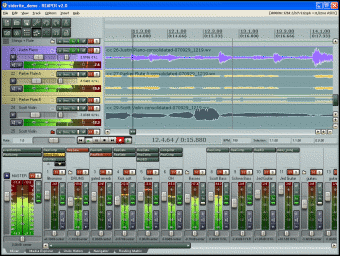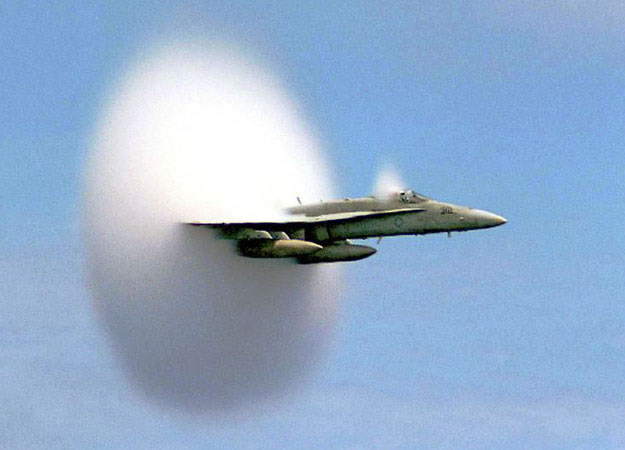 Our session this week opened up with a discussion about file compression. This conversation was sparked by a recently created audio file compression discovered in Reaper called OGG. OGG files appear to be a very efficient means of file compression. Note: we were wondering about the OGG files being possibly the only option that Reaper would use, however I have looked into this and in fact Reaper supports many file formats. From the Reaper Help File
Our session this week opened up with a discussion about file compression. This conversation was sparked by a recently created audio file compression discovered in Reaper called OGG. OGG files appear to be a very efficient means of file compression. Note: we were wondering about the OGG files being possibly the only option that Reaper would use, however I have looked into this and in fact Reaper supports many file formats. From the Reaper Help FileREAPER allows you to use different recording formats for different tracks in the same file. The default format for each new track that you create will be determined by your Project Settings. To change these or any track, simply right click over the track’s VU meter, then from the menu choose rack Recording Settings. You can choose any of the formats WAV, AIFF, Monkey’s Audio, FLAC,MP3, OGG Vorbis, or WavPack lossledd compressor. Depending on which format you choose, you will be presented with a range of options appropriate to that format.
WAV files that have an original file size of 40 MB can be compressed to about 400 k throught the use of OGG files. This is approximately 1/100 of the original WAV file size. By comparison, a typical MP3 file will be 4 MB or 1/10 of the file size. Please note: the above ratios are yet to be confirmed but I will be searching the web for the exact ratios. The MTP compression that the Roland V-Studio uses compresses by approximately 40%.
Next we learnt about velocity (speed of sound) and effects. Sound travels at a speed of 1130 feet per second. For ease of calculation we are rounding down to 1100 feet per second. References of thunder clap we discussed as a way of determining distance. Temperature also enters this equation. For every drop of 1 degree, sound will slow down by 1 foot per second. Here are some notes about effects. Reverb can be referred to as the overall ambient characteristic of the sound. Decay time refers to how long the note/sound sustains. Typical examples are a 2.5 second decay at a rock concert, .4 second decay in our classes live room, and 6 seconds in a cathedral. Diffusion refers to how smooth the reverb is. Early reflections are discernable echo/series of repeats. Repeats must be more than 35 milleseconds before a destict repeat can be detected. Chorus modulation is at a fixed rate and decay.
per second. For ease of calculation we are rounding down to 1100 feet per second. References of thunder clap we discussed as a way of determining distance. Temperature also enters this equation. For every drop of 1 degree, sound will slow down by 1 foot per second. Here are some notes about effects. Reverb can be referred to as the overall ambient characteristic of the sound. Decay time refers to how long the note/sound sustains. Typical examples are a 2.5 second decay at a rock concert, .4 second decay in our classes live room, and 6 seconds in a cathedral. Diffusion refers to how smooth the reverb is. Early reflections are discernable echo/series of repeats. Repeats must be more than 35 milleseconds before a destict repeat can be detected. Chorus modulation is at a fixed rate and decay.
 per second. For ease of calculation we are rounding down to 1100 feet per second. References of thunder clap we discussed as a way of determining distance. Temperature also enters this equation. For every drop of 1 degree, sound will slow down by 1 foot per second. Here are some notes about effects. Reverb can be referred to as the overall ambient characteristic of the sound. Decay time refers to how long the note/sound sustains. Typical examples are a 2.5 second decay at a rock concert, .4 second decay in our classes live room, and 6 seconds in a cathedral. Diffusion refers to how smooth the reverb is. Early reflections are discernable echo/series of repeats. Repeats must be more than 35 milleseconds before a destict repeat can be detected. Chorus modulation is at a fixed rate and decay.
per second. For ease of calculation we are rounding down to 1100 feet per second. References of thunder clap we discussed as a way of determining distance. Temperature also enters this equation. For every drop of 1 degree, sound will slow down by 1 foot per second. Here are some notes about effects. Reverb can be referred to as the overall ambient characteristic of the sound. Decay time refers to how long the note/sound sustains. Typical examples are a 2.5 second decay at a rock concert, .4 second decay in our classes live room, and 6 seconds in a cathedral. Diffusion refers to how smooth the reverb is. Early reflections are discernable echo/series of repeats. Repeats must be more than 35 milleseconds before a destict repeat can be detected. Chorus modulation is at a fixed rate and decay. Now for the fun stuff. We began recording one of the instructors original tunes. In this session we first recorded a scratch track. This was done by recording a rough version of the song using one microphone and was set to a click track at 99 bpm. In this case we used an AKG 414 set to a circle pattern. The placement of the mic allowed for both the vocals and guitar to be well balanced. The location was approximately half way between the sound hole of the guitar and the mouth of the performer and about 12" in front. We then began replacing the scratch guitar parts with overdubs. One guitar overdub was panned hard left while a additional guitar overdub was panned hard right. Once we were happy with the guitar parts, we moved on to recording the vocals. We only had enough time to lay down one vocal track but the quality and performance were good enough to print and move forward. We saved the project and will be adding more instruments in the next lesson.
Now for the fun stuff. We began recording one of the instructors original tunes. In this session we first recorded a scratch track. This was done by recording a rough version of the song using one microphone and was set to a click track at 99 bpm. In this case we used an AKG 414 set to a circle pattern. The placement of the mic allowed for both the vocals and guitar to be well balanced. The location was approximately half way between the sound hole of the guitar and the mouth of the performer and about 12" in front. We then began replacing the scratch guitar parts with overdubs. One guitar overdub was panned hard left while a additional guitar overdub was panned hard right. Once we were happy with the guitar parts, we moved on to recording the vocals. We only had enough time to lay down one vocal track but the quality and performance were good enough to print and move forward. We saved the project and will be adding more instruments in the next lesson. 

2 comments:
WEre the guitar overdubs two different guitar parts or the same part recorded twice?
In this case we use two different guitar tracks and panned hard left/right.
Post a Comment